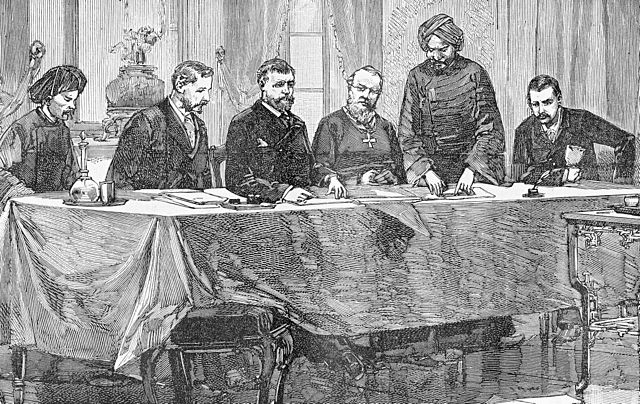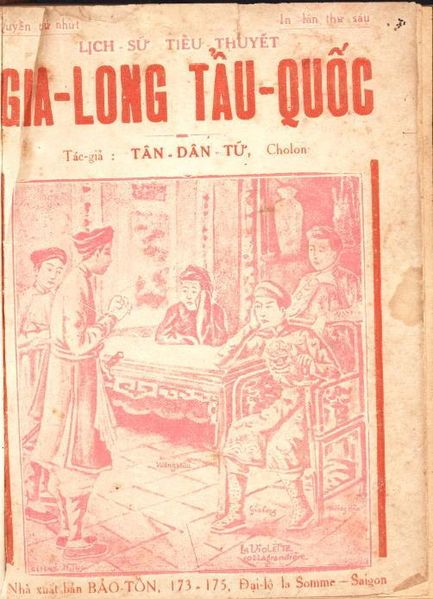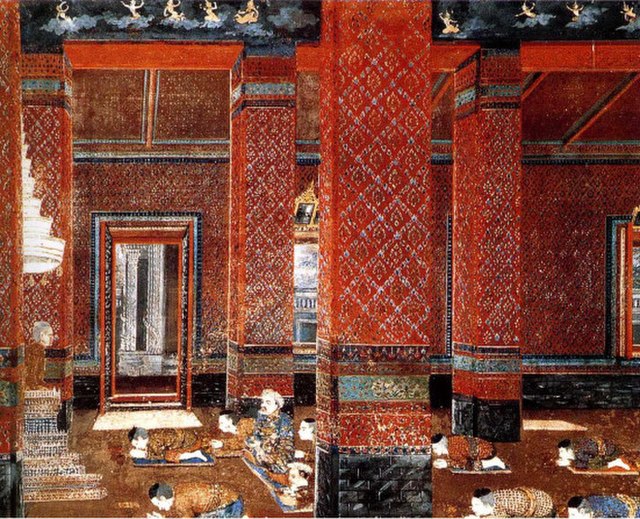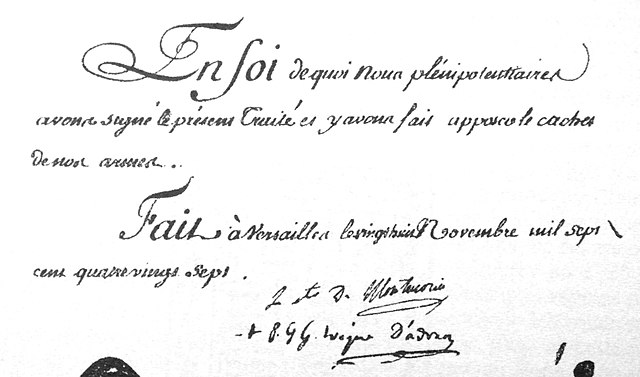The Treaty of Huế, concluded on 25 August 1883 between France and Vietnam, recognised a French protectorate over Annam and Tonkin. Dictated to the Vietnamese by the French administrator François-Jules Harmand in the wake of the French military seizure of the Thuận An forts, the treaty is often known as the 'Harmand Treaty'. Considered overly harsh in French diplomatic circles, the treaty was never ratified in France, and was replaced on 6 June 1884 with the slightly milder 'Patenôtre Treaty' or 'Treaty of Protectorate', which formed the basis for French rule in Vietnam for the next seven decades.
François-Jules Harmand (1845–1921), architect of the Treaty of Huế
Signature of the Treaty of Huế, 25 August 1883
Indo-China – Reception of Mr. Arthur Tricou, Minister Plenipotentiary of France, by the new emperor of Annam.
The Nguyễn dynasty was the last Vietnamese dynasty, which was preceded by the Nguyễn lords and ruled the unified Vietnamese state independently from 1802 to 1883 before being a French protectorate. During its existence, the empire expanded into modern-day southern Vietnam, Cambodia, and Laos through a continuation of the centuries-long Nam tiến and Siamese–Vietnamese wars. With the French conquest of Vietnam, the Nguyễn dynasty was forced to give up sovereignty over parts of southern Vietnam to France in 1862 and 1874, and after 1883 the Nguyễn dynasty only nominally ruled the French protectorates of Annam as well as Tonkin. They later cancelled treaties with France and were the Empire of Vietnam for a short time until 25 August 1945.
The cover of Tân Dân Tử's (1875–1955) 1930 book, Gia Long tẩu quốc, depicted the exile of Nguyễn Ánh.
Nguyễn Ánh (sitting, 2nd row) in audience with King Rama I in Phra Thinang Amarin Winitchai, Bangkok, 1782.
Signatures on the 1787 Treaty of Versailles
Pigneau de Behaine, the French priest who recruited armies for Nguyễn Ánh during Ánh's war against the Tây Sơn







